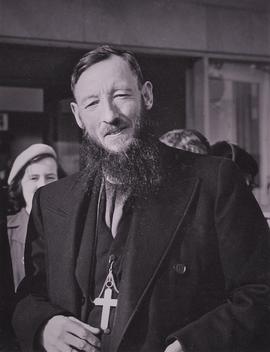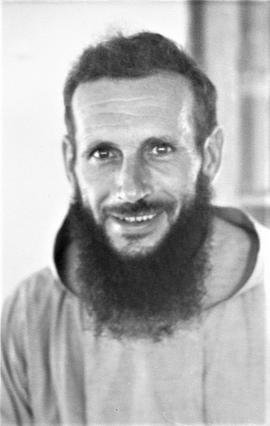Timothy O’Shea was born near the village of Clondrohid in County Cork on 30 June 1902. He joined the Capuchin Franciscans in Kilkenny in September 1920 and took Phelim as his religious name. After taking his usual course of studies in philosophy and theology he was ordained to the priesthood in Holy Trinity Church in Cork on 29 June 1928. He spent the first three years of his priestly life as a member of staff in Rochestown College in County Cork. In September 1931 he left Ireland to become one of the founders of the newly established mission in what was then Barotseland, a protectorate of the British colony of Northern Rhodesia (now the Western Province of Zambia). He was elected as one of the consultors (discreet) to the Regular Superior of the Mission in June 1935 and would hold this position until he was elected Regular Superior in 1946. From 1946 to 1950 he acted as guardian (local superior) and principal of teacher training at the Lukulu mission station in western Zambia. On 24 May 1950 the Holy See appointed him Vicar Apostolic of the Livingstone Vicariate and he was ordained Titular Bishop of Hierocaesarea in St. Mary of the Angels, Church Street, Dublin, on 8 September 1950. On 25 April 1959 the Diocese of Livingstone was canonically established, and he became the Ordinary of the new diocese. He was awarded the Medal of Honour for services to the Zambian nation by President Kenneth Kaunda in 1970. To further the interests of the Zambiansation of the Catholic Church in the country, he resigned as Bishop of the Livingstone Diocese on 17 December 1974. Following a long period of illness, he died on 26 May 1979 and was buried in the cemetery attached to Sancta Maria Church in Lukulu, Zambia
Baptismal name: Timothy Peter Paul O’Shea
Religious name: Fr. Timothy Phelim O’Shea OFM Cap.
Date of birth: 30 June 1902
Place of birth: Curra, Clondrohid, County Cork (Diocese of Cloyne)
Name of father: Timothy
Name of mother: Abina O’Shea (née McSwiney)
Date of reception into the Capuchin Order: 17 Sept. 1920
Date of first profession: 18 Sept. 1921
Date of final profession: 29 Dec. 1925
Date of ordination (as priest): 29 June 1928
Educational attainments: BA, University College Cork (1924); Higher Diploma in Education, University College Cork (1928)
Missionary activities: Travelled to South Africa on 11 Sept. 1931, later to Barotseland, Northern Rhodesia (now Zambia).
Date of death: 26 May 1979
Place of death: Lukulu, Zambia
Place of burial: Cemetery, Sancta Maria, Lukulu, Zambia
Observations: He was noted for his numerous translations of religious texts primarily into the Lozi language spoken in Barotseland. His publications included: ‘Katekisema ni Litapelo za Bakreste’ translated from Sisuto and printed in Rome in 1937 by the Sodality of St Peter Claver; ‘Litapelo ni Lipina’ compiled with aid of Sisuto texts, printed in 1960 by the Sodality of St Peter Claver; ‘Katekisema’ by Bishop Timothy Phelim O’Shea, printed by Teresianum in Lusaka, Zambia, in 1967; ‘Linyalo’ (1963); ‘Evangeli ya Mulen’a luna Jesu Kriste’ (St. Mark) translated in 1948; ‘Likuta le li Katoliki ili Eklesia ya Niti’ (1963); ‘Nzila ya Sifapano’ (Stations of the Cross); in Siluvale language, ‘Vilombelo na Myaso’ (Prayers and Hymns) 1963; ‘Vihande vya Mazu a Kalunga’ (Bible Stories) 1969.









